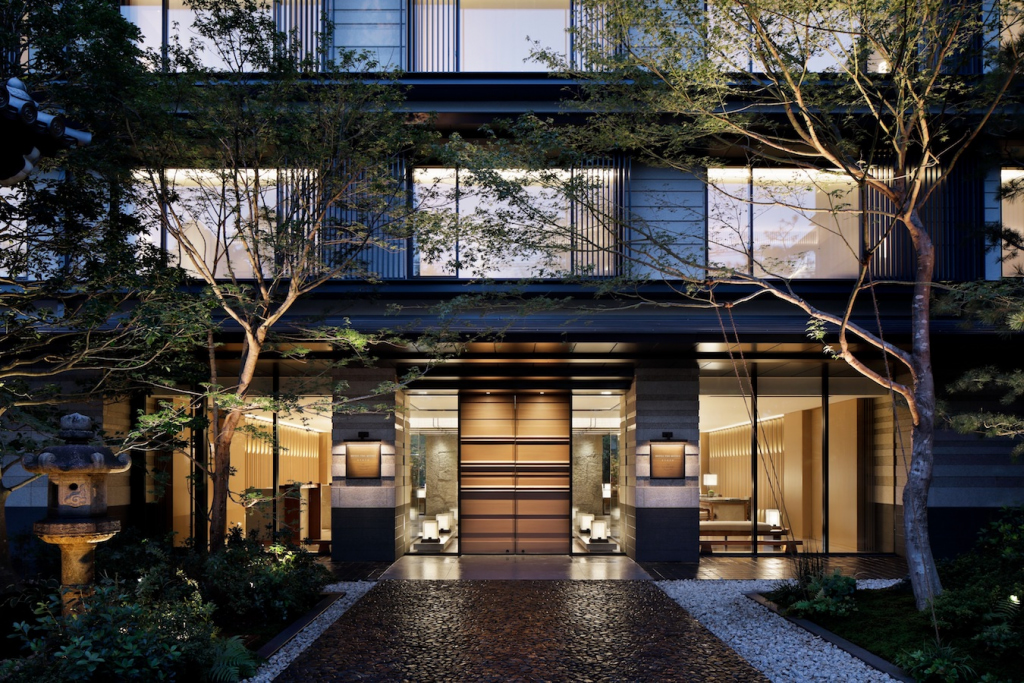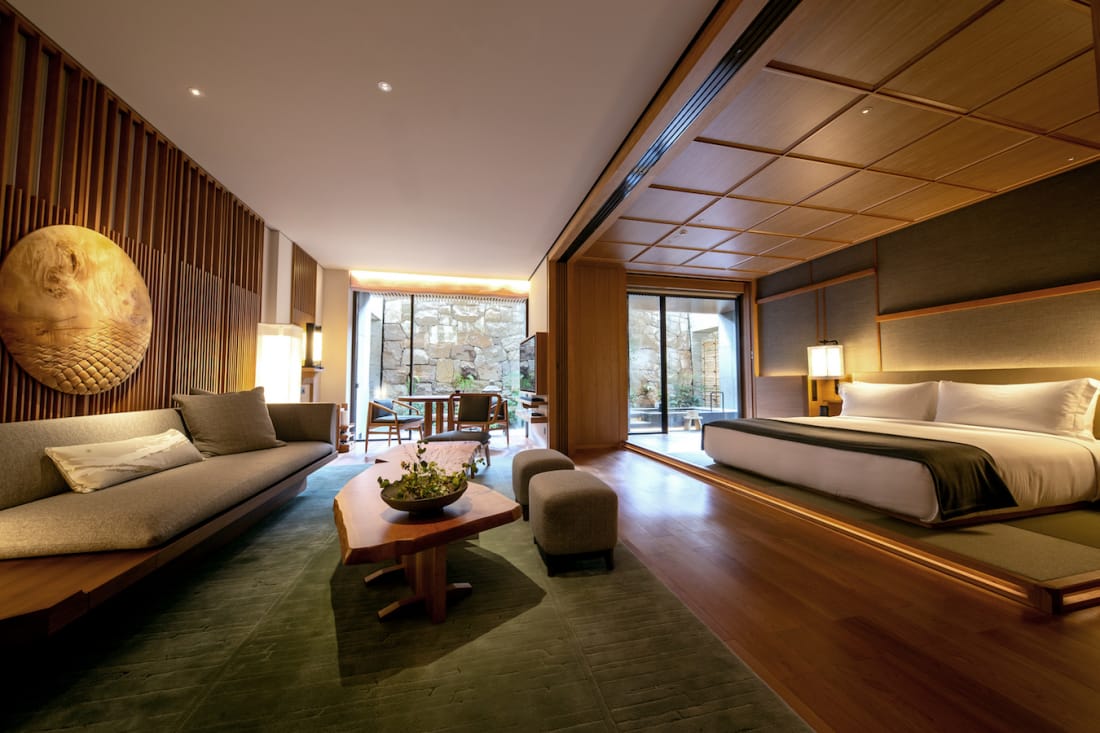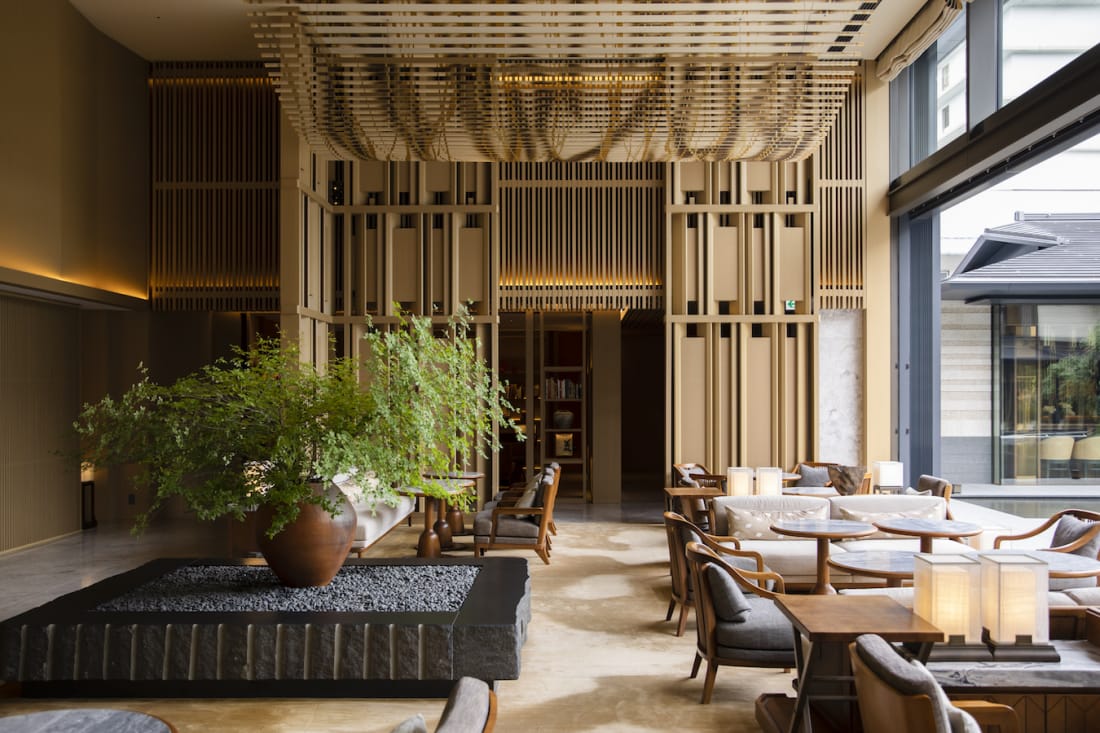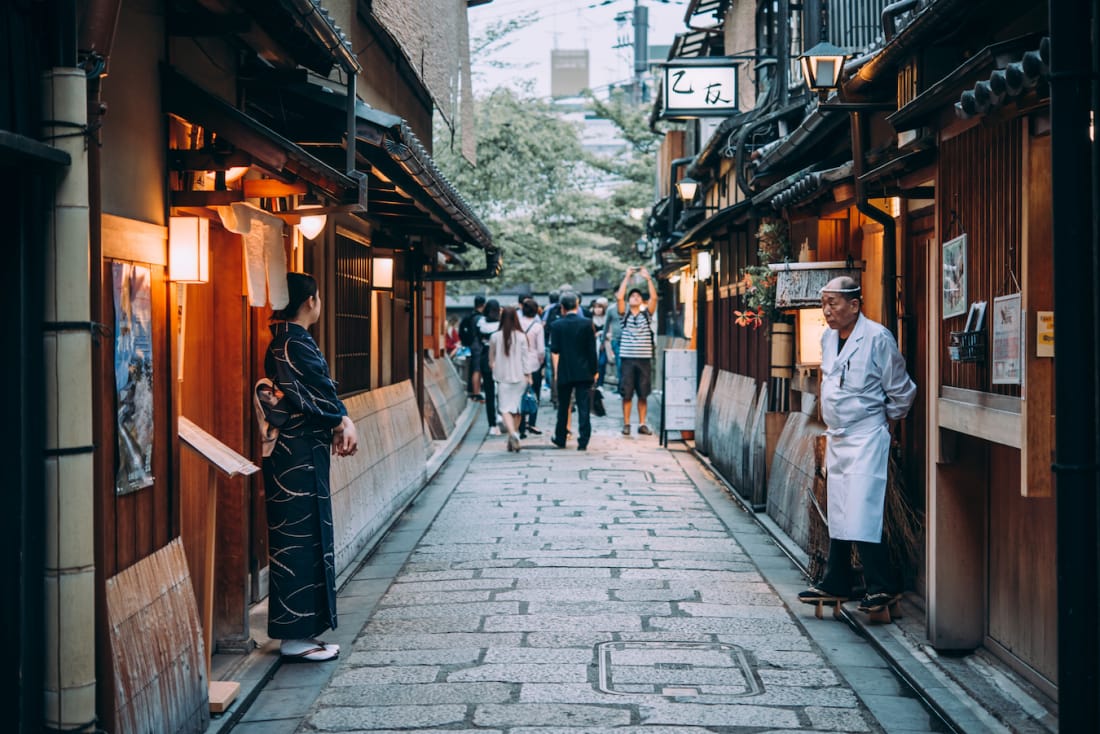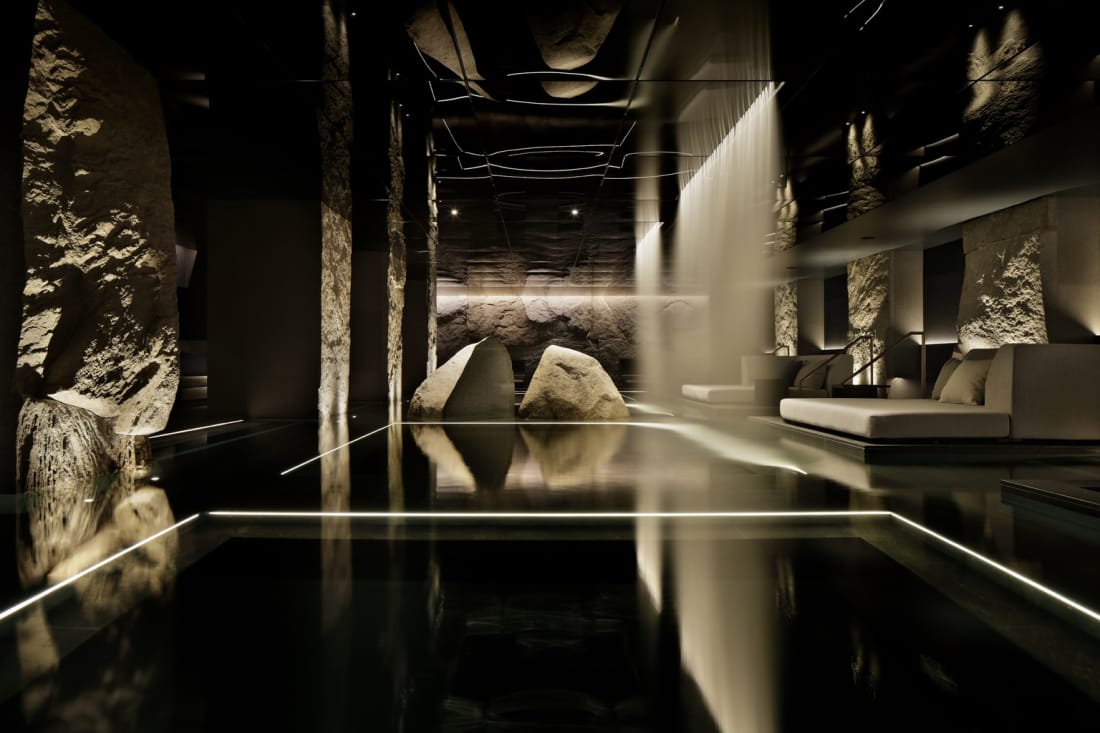The luxury hotel Hotel The Mitsui Kyoto, in all its grandeur takes the ideal of “sustainable tourism” to heart; bringing Japanese traditions to international patrons in full form, buttressed by a modern design sense.
The history of the Mitsui family, one of the most powerful industrial dynasties in Japan, is foundational to the hotel’s look and concept; the latter summed up in the phrase, “Embracing Japan’s Beauty.” Although Hotel The Mitsui Kyoto just opened in November, its history – or at least the history of its location – goes back several centuries.
Located in front of Nijo-jo Castle, constructed in the 17th century to safeguard the imperial court (then located in Kyoto), was the residence of the executive branch of the Mitsui family. From the 18th century to the beginning of the Meiji period, the family’s business dealings were conducted from this property (nowadays you recognize the family name from the real estate company, the bank, etc.).
A Noble Tradition of Hospitality
The hotel retains a number of original features, from the stone lanterns and some of the landscaping to a restored Kaijimiya Gate at the entrance, which is registered as a Tangible Cultural Property (Structures).
The Shiki-no-ma room, which serves as a private dining and event space – holding tea ceremonies, maiko dances and even daily wellness breathing sessions – is a modern, yet historical rendition of the Mitsui family’s former home, with its slender timber frames and the airy, luminous look afforded by Japanese cedar. We can even partake in afternoon tea at the former Shimogamo Villa of the Mitsui family in the Shimogamo district. Confections are made by the hotel chef.
Despite its centuries-old legacy and traditional bent, Hotel The Mitsui Kyoto naturally exercises innovation in architectural and garden design, gastronomy and overall pampering. Luxury is not sacrificed for authenticity or homage, and vice versa. The general design scheme, like that of the garden-side Shiki-no-ma, is Japanese traditional with equally elegant modern inflections.
While the Presidential Suite, one of the most spacious accommodations in Kyoto, boasts more Western appliances – bar-style seating, an enormous bed, mid-century chairs – the wood details and decorative pieces, minimal and striking, seem to bring us back to the ancient city outside the window.
Whereas the Onsen Suites, with sliding-screen doors surrounding the bed and the lighter, cherry tree-based palette, more closely resemble washitsu (Japanese-style rooms). These suites come with the private rotenburo (outdoor bath). The design team, from lobby to guest room to landscape, is overseen by Akira Kuryu, whose architectural plans are noted for blending into or integrating the natural environment. Likewise, the rooms of the Mitsui have something of an openness to the world around: with sleek, flatter furnishings, the window views are more prominent; the artificial light is diffused and more minimal; textures are organic.
Accommodations to Suit Every Taste
For all its modernity and sleekness, of course the Mitsui could not provide total pampering without an onsen. The hotel is the only luxury property in the city center with its own natural water source. The spa area includes a communal hot spring – again, with a reflective ceiling, rugged stone details, even ceiling cascades, the age-old onsen becomes something of a contemporary art installation – as well as private baths and spa rooms.
Even in dining, the Mitsui has cosmopolitan tastes. To appeal to domestic and international guests, or simply our craving for the day, the hotel has two restaurants: Toki, which combines Japanese and French cuisines in teppan dining for a cutting-edge gastronomic experience; and the all-day Italian eatery Forni. Additionally, the Garden Bar provides stunning views of the foliage in its seasonal beauty.
The motivations of the hotel team do not solely include accommodating international visitors. Sure, being a guesthouse is the core of their service. But the property is also an art piece and historical relic, a site suffused with history. Tours of the property are complimentary.
Indeed, the Mitsui is not only accommodations, but also a way to experience the ancient capital, from tea ceremonies to city tours and even kimono fittings. Here, “tourism” means the dissemination of tradition, cultural appreciation, getting familiar with the history.
Preserving the Heritage of Kyoto
Unfortunately, for international cities that are popular holiday destinations, “hard tourism” can have a number of negative effects, from water depletion and destruction of native ecosystems to the dissipation of local culture. Especially ancient Kyoto, whose residents have lately expressed concerns with the changing texture of the city: locals-oriented shops being displaced by tourist-targeted services; the proliferation of hotels and converted lodgings shooting up real estate prices; public transportation becoming even more crowded; and even tourists inadvertently disrespecting historic sites.
In hopeful anticipation of a tourist influx – one that would mark, after the colossal pause, a new age of international travel – the Kyoto City Tourism Association (DMO Kyoto) has formulated the Code of Conduct for Sustainable Tourism in Kyoto. The instructions are aimed towards three groups: tourism industry workers, tourists and city residents.
Kyoto’s Code of Conduct for Sustainable Tourism
The city, rather than rushing into the prospective sightseeing season, wants to proceed with caution to avoid those tensions between sightseers and locals, and the Code is meant to protect the needs of the resident community while fostering feelings of hospitality towards visitors. For the latter, there is an emphasis on respecting the city landscape, from the customs and daily lives of the community to the natural environment and the architecture, particularly the historic and scenic sites.
Tourists and residents are encouraged to interact with each other, with locals using these interactions as opportunities for not only cultural exchange, but also the extension of warm regards. The benefits are twofold, with the traveling experience being enriched through more respectful and intimate immersions in local culture and Kyotoites being able to nurture pride in the city.
At Hotel The Mitsui Kyoto, this care for tradition and the utmost level of hospitality is on full display, and guests can rest and relax, reassured the spirit of Kyoto is being preserved for generations to come.
Hotel The Mitsui Kyoto started taking reservations from July 21. Reserve via telephone at +81(0)75-468-3155 or email at [email protected].
More info: www.hotelthemitsui.com
Kyoto City Official Travel Guide https://kyoto.travel/en/
Sponsored Post
Updated On December 28, 2022

